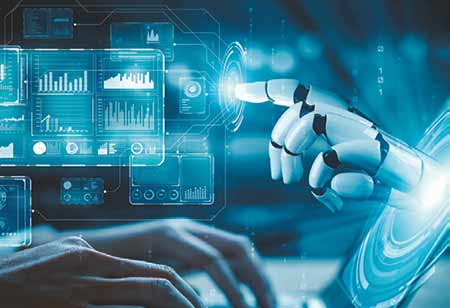THANK YOU FOR SUBSCRIBING

Innovation in Hong Kong Construction Site
Mr. Henry Chan – Deputy Construction Manager – Bouygues Travaux Publics

 Mr. Henry Chan – Deputy Construction Manager – Bouygues Travaux Publics
Mr. Henry Chan – Deputy Construction Manager – Bouygues Travaux PublicsThrough this article, Mr. Henry Chan highlights the innovative technologies transforming construction sites in Hong Kong. He discusses the adoption of smart sensors, IoT and advanced equipment such as exoskeletons and drones, which enhance safety, productivity and efficiency. Chan also covers the integration of modular construction methods (DfMA, MiC and MiMEP) that reduce project timelines and costs while improving quality.
Introduction
The promotion of adopting innovative methods to enhance the productivity and sustainability of construction projects boosted the development of advanced technologies applications in construction sites supported by a government funding scheme. The article introduced the application of technologies by categories in the Hong Kong construction industry, with cases that involved construction sites.
1. Smart Sensors and IoT
Concrete Maturity Sensor
The application of concrete maturity sensors in concrete elements is a cost-effective solution compared to a traditional destructive test method (cast extra concrete cube for crushing cube strength). Integration with IoT by installing a sensor hub, the data collected by the sensor can be monitored and recorded in real-time for quality purposes and streamline the process of waiting for concrete strength for formwork removal.
“The adoption of smart sensors and IoT is revolutionizing the way we manage construction sites, offering real-time data and reducing risks significantly.”
Anticollision camera and smart helmet
Moving plants and pedestrian collisions are some of the significant risks in construction sites, which bring injuries and fatalities, causing project time loss. By application of the anticollision camera (Blaxtair) installed on the construction plant and construction worker equipped with a smart helmet (IoT sensor installed), the system will alert both the plant operator and worker, which reduces the risk of collision. The construction plants used at our site are equipped with Blaxtair, and we are promoting the adoption of smart helmets for workers.
The smart helmet can also track the physical location and physical health situation of the construction worker, which is vital, especially for a confined space working environment, i.e., a tunneling project. The smart helmet is integrated with a cloud-based management system, which alerts the supervisors to take action if the helmet is equipped and notices no movement for 10 minutes, assuming the worker fainted.
2. DfMA, MiC and MiMEP
The industry is changing the construction method from institute construction works to offsite fabrication and assembling the components on-site, reducing project duration with cost and quality benefits. Design for Manufacturing and Assembly (DfMA) strategy plays a key role in the project's design development, utilizing the materials and process in the fabrication yard and minimizing the operation required for assembly on-site. Modular integrated construction and multi-trade integrated mechanical, electrical, and plumbing construction methods become essential to deliver the project to the client by installing the prefabricated components by lifting machinery and connecting the components by manual operation and handling.
3. Advanced equipment
Exoskeleton for construction worker
The application of new materials developed the use of exoskeletons for construction workers, which enhanced productivity and reduced fatigue and pain due to improper manual operation. The drilling requires workers to hold the heavy rotary hammer drill that can be aided by the exoskeleton, especially for overhead drilling commonly needed for construction sites.
Drone
The trend of using drone technology to take over traditional inspection operations has increased, and it is considered a cost-effective solution. The data collection capabilities of drones equipped with advanced sensors enable integration with cloud-based platforms (i.e., Digital Twins) and collaboration with the project team through aerial photo and reality 3D models. More details can be found in my previous article, “Drone Application in the Construction Industry,” published.
4. Digitalization with cloud-based platforms
Digital twins
The innovation solution adopted in construction sites can integrate with digital twins, which store BIM (Building Information Modeling), GIS (Geographical Information System), and data from sensors and IoTs, and simulate the site with real-time information. Several aspects can be monitored: the sound level generated by construction noise, the water quality discharged by the site, the windspeed measured on site for lifting safety, construction plant and construction worker location tracking and construction activities identified by the AI camera installed. The digitalization tools applied transform how to deliver a construction project with higher standards.
Conclusion
The construction industry in HK is stepping into the next era with the 5th industrial revolution, which is applying several aspects of recent technologies. With the culture promoted by the client and funding supported by the government, more innovative solutions should be invented that become the standard practice and adopted worldwide in the future.
Read Also



















ON THE DECK